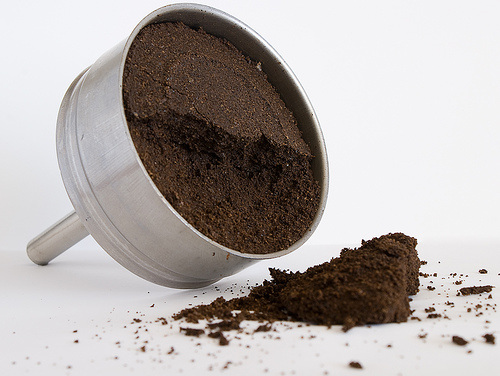New setting of Coffee grounds-raising cattle

Starbucks in Japan recently partnered with Menicon, a contact lens company, to successfully develop the latest lactic acid fermentation technology that allows coffee grounds to be converted into dairy cattle feed. The quality of the milk produced is excellent, and it has become a popular added milk for Starbucks in Japan.
Coffee is the world's most traded agricultural product, with 9.34 million packets of coffee beans circulating internationally between 2009 and 2010 alone, according to the International Coffee Organization, while roasted, brewed coffee grounds are mostly discarded, buried, composted or incinerated. To solve the problem of resource waste, Starbucks has teamed up with Menicon, a Japanese contact lens company, to develop new technology that allows coffee grounds to be recycled and used as feed for dairy cows.
Menicon's fermentation technology was originally tested to find new uses for rice straw, but unexpectedly, the lactic acid fermentation technology developed by Menicon can improve the nutritional value of coffee grounds, and can also be used to feed cattle. Compared with directly discarding or using it as a mixed fertilizer, it can give full play to the nutritional components of coffee grounds.
According to reports, Professor He He of the Veterinary College of Azabu University said that somatic cell count in milk is an important indicator to judge the quality of milk. If the number is lower, it means that the quality is better, and milk with higher somatic cells is more suitable for making yogurt, cheese and other by-products. Cows fed coffee grounds did produce lower somatic cell counts in milk than cows in general.
But Starbucks is also faced with how to collect coffee grounds collected from 1,000 Starbucks outlets across Japan in the shortest time possible. Therefore, they have added special storage areas to the container trucks for refrigerated products. Under the consideration of hygiene and efficiency, there is no need to send additional trucks to transport coffee grounds, and there will be no additional carbon emissions. The coffee grounds are collected from each branch and processed centrally by the recycling center, which uses the latest lactic acid fermentation technology to enhance the nutritional value of coffee grounds.
A Starbucks spokesman in Japan said customers who tried milk from cows raised with coffee grounds had mostly responded positively. Starbucks also uses fermented coffee grounds as organic plant fertilizer to serve as a delicacy on customers 'tables.
Important Notice :
前街咖啡 FrontStreet Coffee has moved to new addredd:
FrontStreet Coffee Address: 315,Donghua East Road,GuangZhou
Tel:020 38364473
- Prev

The Development Road of domestic Fine Coffee
Not long ago, 72 raw coffee beans from various producing areas of Pu'er City participated in the second Pu'er Coffee Raw Bean Competition.
- Next

Costa Coffee's Coffee Market in China
In China, Starbucks is the first thing that comes to mind when it comes to coffee shops. But Costa, which is also of foreign origin, is expanding aggressively in China to compete with Starbucks in China.
Related
- What is the difference between a cake filter cup and a V60 conical filter cup? What are the advantages and disadvantages of the flat-bottomed filter cup brewing solution?
- What is the difference between fine coffee powder and medium coarse coffee powder? Do I need to sift out the fine coffee powder for making coffee by hand?
- Why does hot American coffee taste bitter? Difference in proportional concentration between hot American and ice American
- Is espresso stored overnight in the refrigerator harmful to your body? Is frozen coffee better than freshly ground coffee?
- What parameters and proportions of water temperature should be used to grind and brew fresh coffee beans? Why can't I drink freshly roasted coffee right away?
- Customers have "changed" Manner's new products! Shop assistant: Please don't mess around!
- Remove sockets in customer areas at Starbucks stores?! Netizen: I won't go if I really tear it down
- What is the difference between the taste steps of sun-dried coffee and washed coffee? Why is sun-cured coffee sweeter and washed coffee sour?
- The recipe for salty grapefruit dirty is revealed! Coffee Festival salty grapefruit dirty coffee making materials parameters ratio milk share!
- How about the flavor of Sunlight 74158 at Sidamo Banshaha Mathieu Processing Factory in Ethiopia? 74158 Share the proportion of coffee brewing parameters!

